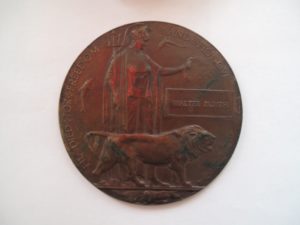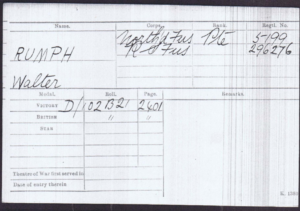Walter Rumph Case Study
Case Study for Research:
This is the sort of information that our researchers can glean by their research – you will note that, as well as our own archive materials and journals, we are also able to access external resources such as the National Archive at Kew and Ancestry, which can prove expensive to an individual trying to research on their own.
Our case study follows the career of Private Walter Rumph (296276) of the 12th Battalion, The Royal Scots Fusiliers.
We have used Private Rumph, as his case study shows that soldiers came to our Regiment and antecedent regiments by a variety of routes, particularly in WWI, and not necessarily just from traditional recruiting areas. Also, the Museum is extremely fortunate in having many items from Walter and his girls, which were kindly donated by his family – quite often we discover items within the collection which relate in some way to an enquiry.
Walter Rumph was born in Brixton in the London Borough of Lambeth, on April 1892; although he lived in Camberwell for most of his life. His father, Samuel Rumph, was listed as a bus driver.
Here’s an image of his Birth Index record taken from Ancestry.com
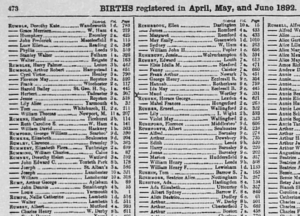
Our next piece of evidence is the marriage certificate that records Walter’s marriage to Helen Sophie Austin on 28 September 1913. At that time, he lived at 130 Camberwell Road and his profession was listed as a greengrocer.
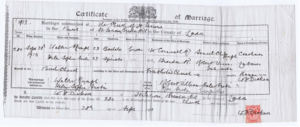
Its worth noting that there is a two year discrepency between the age given on the his birth index and the age given on his marriage certificate, however such discrpencies arent unheard of. Their daughter, Gracie, was born in the summer of 1914 to complete Walter’s family.

Walter’s “Girls” : Helen and Grace.
Walter originally enlisted into the Northumberland Fusiliers in 1914 and was posted to the Middle East, and then transferred to the 12th Battalion, The Royal Scots Fusiliers (12 RSF).
Image below of ID tags, cloth RSF badge
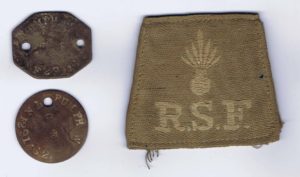
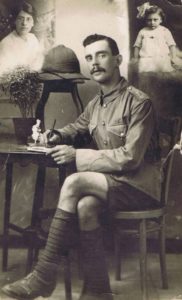
Walter during his time in the Middle East, with photographs of Helen & Grace
It was during this posting in the Middle East that Walter began to send postcards to his girls.
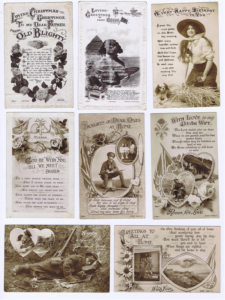
Collection of postcards from Malta, Egypt & Cairo
Towards the end of the war, 12 RSF were sent to France.
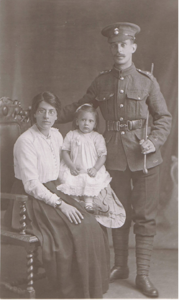
Walter sent many postcards and letters to his girls from France – among the most poignant one celebrating their wedding anniversary.
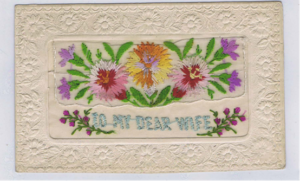
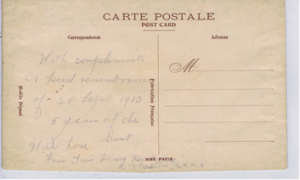
Decoratively embroidered postcard reads: “With compliments of kind remembrance of Sept 1913, 5 years of the best with love from your loving Husband Walter xxxx”.
Gracie was not forgotten.
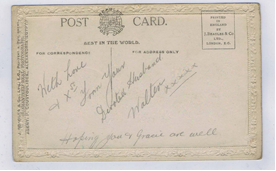
Postcard reads: “With love & X’s from your devoted Husband Walter xxxxx, Hoping you and Gracie are well”.
He also sent trinkets from France:
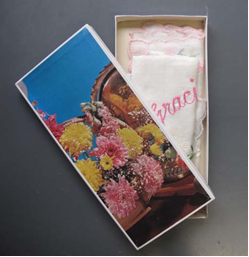
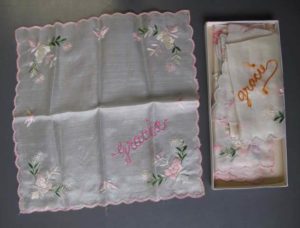
Sadly, Walter was killed in action on 31 October 1918; just eleven days before the end of the war and one month after he sent his anniversary postcard to Helen. He was buried at the Harlebeke New British Cemetery in Belgium.
Picture of grave sent by Imperial War Graves Commission and Image of war grave & registration
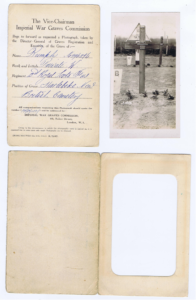

The next of kin of all service personnel killed in WWI were presented with a Memorial Plaque, commonly known as the Dead Man’s Penny, along with a scroll and letter from the War Office.
Walter’s Memorial Scroll & Plaque
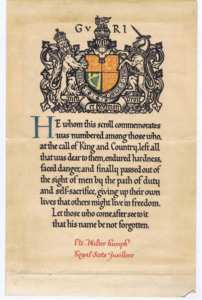
It is usually possible for our researchers to access Medal Cards for service personnel for WWI, although some records were destroyed by German bombing in WWII.

